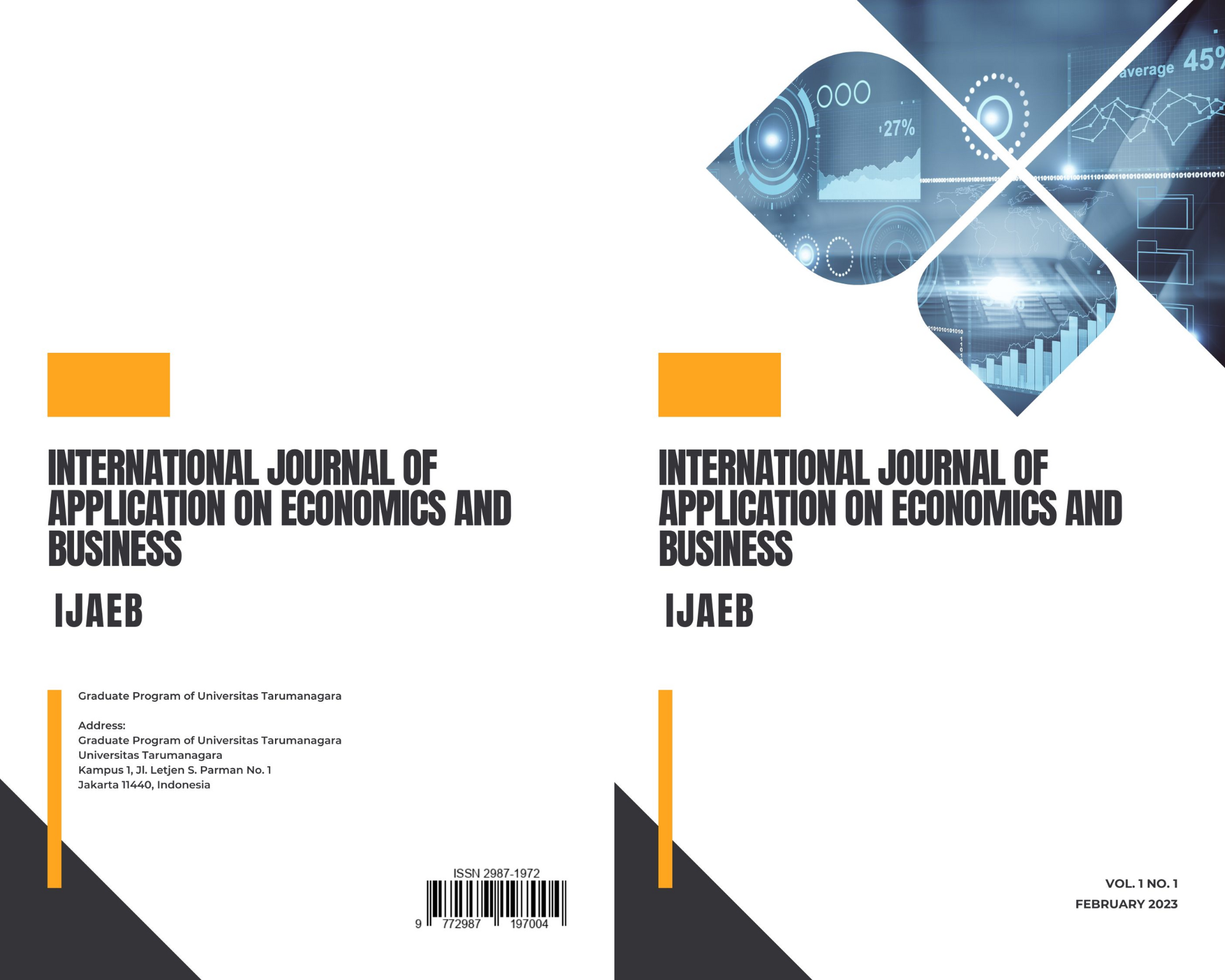The Impact of Performance Expectancy, Effort Expectancy, Habit, and Price Value on The Behavioral Intention of Tokopedia Users in Jakarta
Main Article Content
Abstract
The development of increasingly advanced technology now has a big impact and greatly affects human activities that make human life easier, one of which is the online shopping application at Tokopedia. The focus on this study is to determine the effect of performance expectations, effort expectations, habit, and price value on the behavioral intention of the Tokopedia application in Jakarta. This study used 200 samples with purposive sampling method, namely those using the Tokopedia application in Jakarta with ages above 20 years which was carried out in the form of google form. The results is all variables have a positive effect on the behavioral intention of Tokopedia users except for the performance expectation variable which not have a significant effect on the behavioral intention of Tokopedia users. In this study, it was found that the variable that had the most influence on behavioral intentions was habit.
Article Details

This work is licensed under a Creative Commons Attribution-NonCommercial-ShareAlike 4.0 International License.
This journal provides immediate open access to its content on the principle that making research freely available to the public supports a greater global exchange of knowledge.
IJAEB by Graduate Program of Universitas Tarumanagara is licensed under a Creative Commons Attribution-NonCommercial-ShareAlike 4.0 International License.. Permissions beyond the scope of this license may be available at https://journal.untar.ac.id/index.php/ijaeb
References
"Laporan survei internet APJII 2019 - 2020 (Q2)," [Online]. Available: https://www.apjii.or.id/ content/read/39/521/Laporan-Survei-Internet- APJII-2019-2020-Q2.
V. Venkatesh, M. G. Morris, G. B. Davis and F. D. Davis, "User Acceptance of Information Technology: Toward a Unified View," MIS Quarterly, vol. 27, no. 3, pp. 425-478, 2003. DOI: 10.2307/30036540.
C. Ye and R. Potter, "The Role of Habit in Post-Adoption Switching of Personal Information Technologies: An Empirical Investigation," Communications of the Association for Information System, vol. 28, no. 1, pp. 425-478, 2011. DOI: 10.17705/1CAIS.02835.
V. Venkatesh, J. Y. L. Thong and X. Xu, "Consumer acceptance and use of information technology: extending the unified theory of acceptance and use of technology," MIS quarterly, vol. 36, no. 1, pp. 157-178, 2012. DOI: 10.2307/41410412.
L. Schiffman and L. L. Kanuk, Perilaku Konsumen, Edisi Ketujuh, Jakarta: Indeks, 2008.
K. K. Twum, D. Ofori, G. Keney and B. K. Yeboah, "Using the UTAUT, personal innovativeness and perceived financial cost to examine student’s intention to use E-learning," Journal of Science and Technology Policy Management , 2021. DOI: 10.1108/JSTPM-12-2020-0168.
V. Venkatesh, M. G. Morris, G. B. davis and f. D. Davis, "User acceptance of information technology: toward a unified view," MIS Quarterly, vol. 27, no. 3, pp. 425-478, 2003. DOI: 10.2307/30036540.
P. Reyes-Mercado, "Adoption of fitness wearables: Insights from partial least squares and qualitative comparative analysis," Journal of Systems and Information Technology, vol. 20, no. 1, pp. 103-127, 2018. DOI: 10.1108/JSIT-04-2017-0025.
M. Limayem, S. G. Hirt and C. M. K. Cheung, "How habit limits the predictive power of intention: The case of information systems continuance," MIS quarterly, vol. 31, no. 4, pp. 705-737., 2007. DOI: 10.2307/25148817.
P. Tak and S. Panwar, "Using UTAUT 2 model to predict mobile app based shopping: evidences from India," Journal of Indian Business Research, vol. 9, no. 3, pp. 248-264, 2017. DOI: 10.1108/JIBR-11-2016-0132.
W. B. Dodds, K. B. Monroe and D. Grewal, "Effects of price, brand, and store information on buyers’ product evaluations," ournal of marketing research, vol. 28, no. 3, pp. 307-319, 1991. DOI: 10.1177/002224379102800305.
A. Andrianto, "faktor yang mempengaruhi behavio intention untuk penggunaan aplikasi dompet digital menggunakan model UTAUT2," Jurnal Ilmiah Ekonomi Bisnis, vol. 25, no. 2, pp. 111-122, 2020.
S. Arikunto, Prosedur Penelitian: Suatu Pendekatan Praktik, Jakarta: Rineke Cipta, 2010.
J. Hair, G. T. M. Hult, C. M. Ringle and M. Sarstedt, A Primer on Partial Least Squares Structural Equation Modeling (PLS-SEM). 2nd edition, Los Angeles: Sage, 2017.
A. P. D. Widarjono, Analisis multivariat terapan, Yogyakarta: UPP STIM YKPN, 2015.
M. S. Rahman, S. Das, G. M. S. Hossain and T. Tajrin, "Teenager's behavioral intention towards wearable technologies and intention to recommend others: an empirical study in Bangladesh," Journal of Science and Technology Policy Management, 2020. DOI: 10.1108/JSTPM-05-2020-0088
K. Wijaya and E. Handriyantini, "analisis faktor yang mempengaruhi behavioral intention pada online marketplace menggunakan model UTAUT(STUDI KASUS : SHOPEE)," Seminar Nasional Teknologi Informasi dan Komunikasi STI & K, vol. 4, no. 1, pp. 323-332, 2020. DOI: 10.32409/jikstik.4.1.321
K. Gupta and N. Arora, "Investigating consumer intention to accept mobile payment systems through unified theory of acceptance model: An Indian perspective," South Asian Journal of Business Studies, vol. 9, no. 1, pp. 84-114, 2019. DOI: 10.1108/SAJBS-03-2019-0037.
M. Merhi, K. Hone, A. Tarhini and N. Ameen, "An empirical examination of the moderating role of age and gender in consumer mobile banking use: a cross-national, quantitative study," Journal of Enterprise Information Management, vol. 34, no. 4, pp. 1144-1168, 2020. DOI: 10.1108/JEIM-03-2020-0092.



